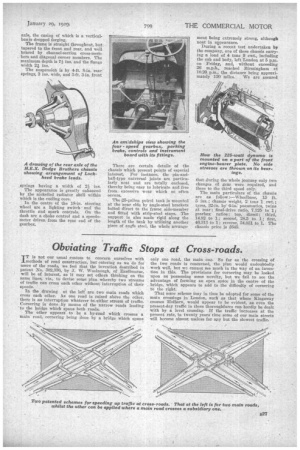Obviating Traffic Stops at Cross-roads.
Page 11

If you've noticed an error in this article please click here to report it so we can fix it.
IT is not our usual custom to concern ourselves with methods of road construction, but catering as we do for users of the roads, we feel that the invention described in patent No. 302,376, by J. W. Woolnough, of Eastbourne, will be of interest, as it may set others thinking on the same lines, viz., to devise some plan whereby two streams of traffic can cross each other without interruption of their speeds.
In the drawing at the left are two main roads which cross each other. As one road is raised above the other, there is no interruption whatever to either stream of traffic. Cornering is done by means of the narrow roads leading ' to the bridge which spans both roads.
The other appears to be a by-road which crosses a main road, cornering being done by a bridge which spans
only one road, the main one. So far as the crossing of the two roads is concerned, the plan would undoubtedly work well, but we cannot see much in the way of an invention in this. The provisions for cornering may be looked upon as possessing some novelty, but we fail to see the advantage of forming an open space in the centre of the bridge, which appears to add to the difficulty of cornering to the right.
That some scheme may in time be adopted for some of the main crossings in Landon, such as that where Kingsway crosses Holborn, would appear to be evident, as even the present-day traffic in these thoroughfares can hardly be dealt with by a level crossing. If the traffic increases at the present rate, in twenty years time some of our main streets will become almost useless for a.ny but the slowest traffic.


































